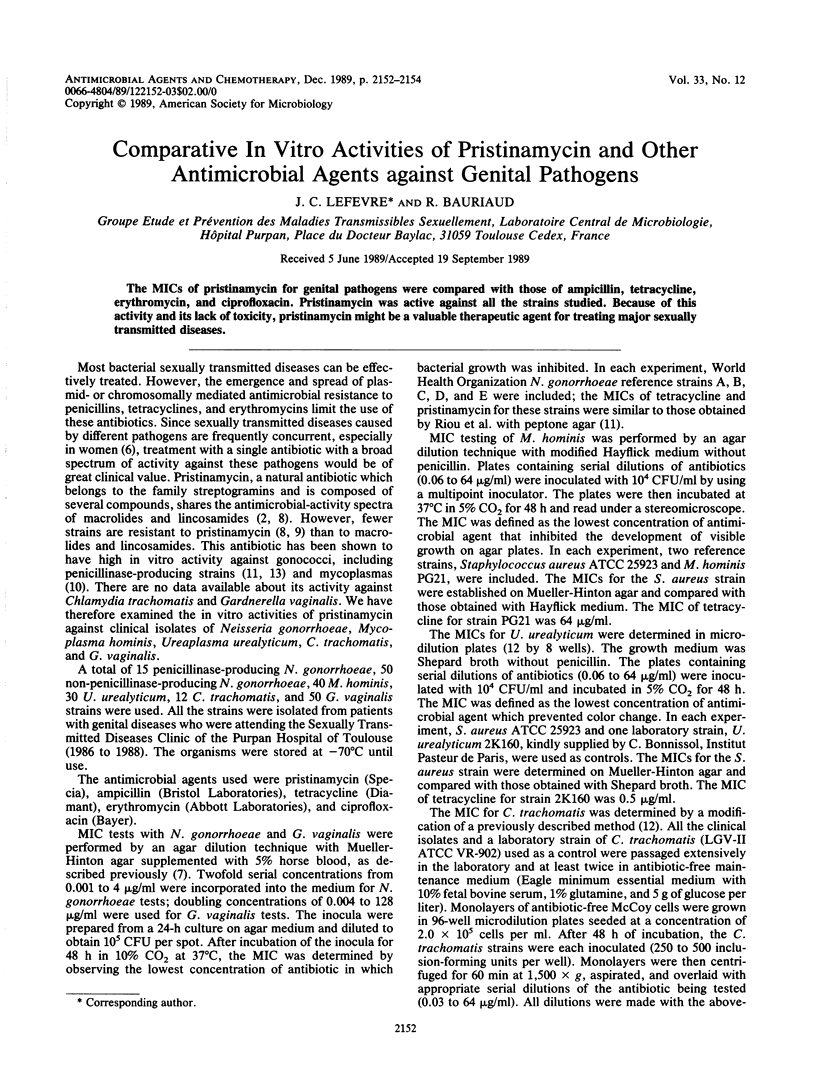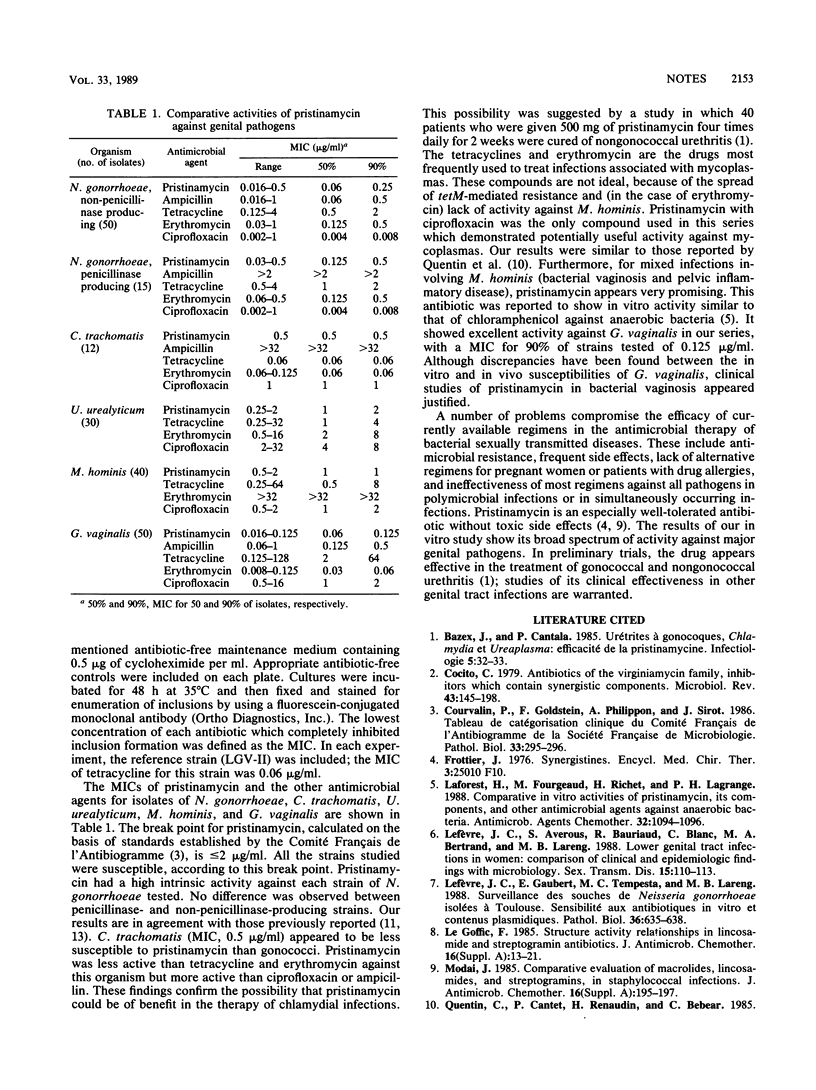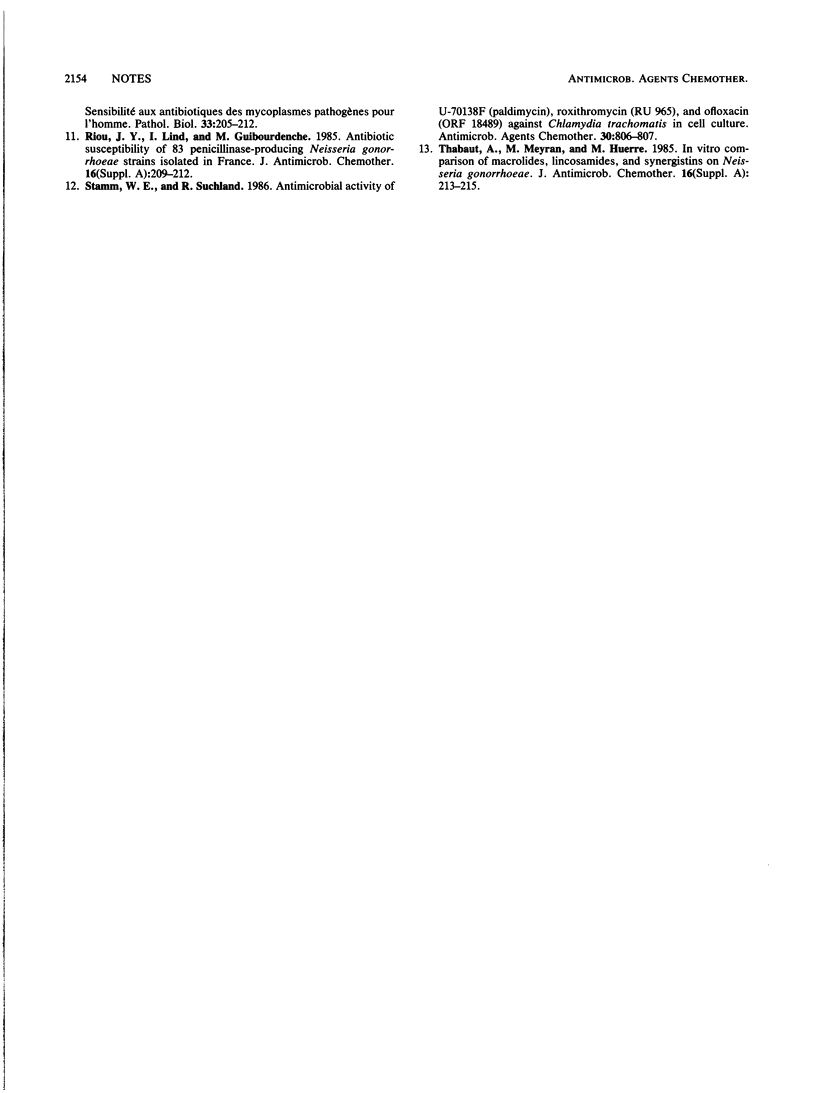Abstract
The MICs of pristinamycin for genital pathogens were compared with those of ampicillin, tetracycline, erythromycin, and ciprofloxacin. Pristinamycin was active against all the strains studied. Because of this activity and its lack of toxicity, pristinamycin might be a valuable therapeutic agent for treating major sexually transmitted diseases.
Full text
PDF


Selected References
These references are in PubMed. This may not be the complete list of references from this article.
- Cocito C. Antibiotics of the virginiamycin family, inhibitors which contain synergistic components. Microbiol Rev. 1979 Jun;43(2):145–192. doi: 10.1128/mr.43.2.145-192.1979. [DOI] [PMC free article] [PubMed] [Google Scholar]
- Laforest H., Fourgeaud M., Richet H., Lagrange P. H. Comparative in vitro activities of pristinamycin, its components, and other antimicrobial agents against anaerobic bacteria. Antimicrob Agents Chemother. 1988 Jul;32(7):1094–1096. doi: 10.1128/aac.32.7.1094. [DOI] [PMC free article] [PubMed] [Google Scholar]
- Le Goffic F. Structure activity relationships in lincosamide and streptogramin antibiotics. J Antimicrob Chemother. 1985 Jul;16 (Suppl A):13–21. doi: 10.1093/jac/16.suppl_a.13. [DOI] [PubMed] [Google Scholar]
- Lefevre J. C., Gaubert E., Tempesta M. C., Lareng M. B. Surveillance des souches de Neisseria gonorrhoeae isolées à Toulouse. Sensibilité aux antibiotiques in vitro et contenus plasmidiques. Pathol Biol (Paris) 1988 Jun;36(5 Pt 2):635–638. [PubMed] [Google Scholar]
- Lefèvre J. C., Averous S., Bauriaud R., Blanc C., Bertrand M. A., Lareng M. B. Lower genital tract infections in women: comparison of clinical and epidemiologic findings with microbiology. Sex Transm Dis. 1988 Apr-Jun;15(2):110–113. doi: 10.1097/00007435-198804000-00009. [DOI] [PubMed] [Google Scholar]
- Modai J. Comparative evaluation of macrolides, lincosamides and streptogramins in staphylococcal infections. J Antimicrob Chemother. 1985 Jul;16 (Suppl A):195–197. doi: 10.1093/jac/16.suppl_a.195. [DOI] [PubMed] [Google Scholar]
- Riou J. Y., Lind I., Guibourdenche M. Antibiotic susceptibility of 83 penicillinase-producing Neisseria gonorrhoeae strains isolated in France (May 1979-April 1983). J Antimicrob Chemother. 1985 Jul;16 (Suppl A):209–212. doi: 10.1093/jac/16.suppl_a.209. [DOI] [PubMed] [Google Scholar]
- Stamm W. E., Suchland R. Antimicrobial activity of U-70138F (paldimycin), roxithromycin (RU 965), and ofloxacin (ORF 18489) against Chlamydia trachomatis in cell culture. Antimicrob Agents Chemother. 1986 Nov;30(5):806–807. doi: 10.1128/aac.30.5.806. [DOI] [PMC free article] [PubMed] [Google Scholar]
- Thabaut A., Meyran M., Huerre M. In-vitro comparison of macrolides, lincosamides and synergistins on Neisseria gonorrhoeae. J Antimicrob Chemother. 1985 Jul;16 (Suppl A):213–215. doi: 10.1093/jac/16.suppl_a.213. [DOI] [PubMed] [Google Scholar]


